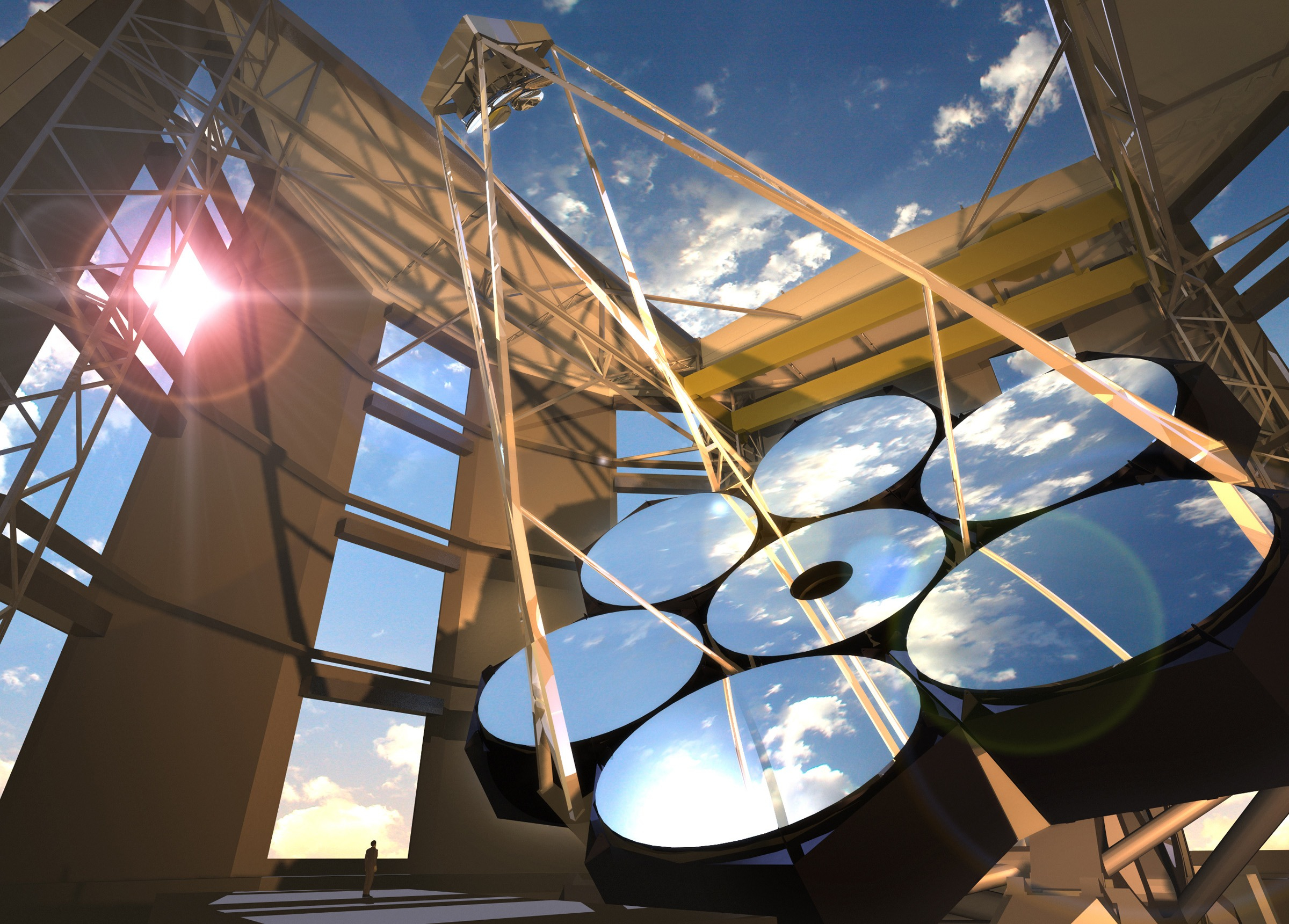
An enormous mirror will be cast inside a scorching-hot furnace Saturday (Aug. 24), marking a key milestone in the development of a future telescope that will collect more light than any instrument built to date.
The Giant Magellan Telescope mirror, the third of the seven primary mirrors planned for the observatory, will be 27 feet (8.4 meters) across and weigh 20 tons when complete. It will be forged from chunks of borosilicate glass subjected to temperatures of 2,140 degrees Fahrenheit (1,170 degrees Celsius) inside a rotating furnace Saturday at the University of Arizona's Steward Observatory Mirror Lab in Tucson.
Once cast and polished, these seven mirrors will be arranged to function as a single mirror 80 feet (24.5 m) in diameter, giving the $700 million GMT a resolving power 10 times greater than that of NASA's famous Hubble Space Telescope once the new instrument is up and running in northern Chile in 2020. [See more images of the Giant Magellan Telescope (Gallery)]

"Astronomical discovery has always been paced by the power of available telescopes and imaging technology," Peter Strittmatter, head of the Steward Observatory's astronomy department, said in a statement. "The GMT allows another major step forward in both sensitivity and image sharpness."
This sharpness will be achieved with the aid of seven smaller secondary mirrors, which will act as an adaptive optics system that cancels out the blurring effect of Earth's atmosphere.
Astronomers will use the GMT to detect and characterize exoplanets, investigate the nature of mysterious dark matter and dark energy and study the physics of black holes, among other things, telescope officials said.
The GMT is one of several huge telescope projects under way around the world to usher in a new era of Earth-based astronomical research. Despite the immense size of the GMT, it is still not the largest telescope slated for construction.
Get the Space.com Newsletter
Breaking space news, the latest updates on rocket launches, skywatching events and more!
The planned Thirty Meter Telescope, which is slated to be built atop Mauna Kea in Hawaii, will be about 98 feet (30 m) across when it begins observations in 2025. The European Extremely Large Telescope project, meanwhile, will hold the record for the largest Earth-based optical telescope. It will have a main mirror 138 feet (42 m) across and be built in Chile, like GMT, but be overseen by the European Southern Observatory.
The GMT's first mirror has already been cast and polished to a surface accuracy within 25 nanometers — about 1,000 times thinner than a human hair — while the second mirror has been cast but is not yet completed. Construction of the GMT facility, at the Las Campanas Observatory in northern Chile's Atacama Desert, is slated to begin in 2014, with science operations starting six years later. The telescope's site was cleared in March 2012 with a massive explosion.
The GMT team and the University of Arizona are inviting reporters to attend Saturday's mirror casting, and SPACE.com's Mike Wall will make the trip. So check back soon for an account of this milestone event, along with lots of pretty pictures.
Follow Mike Wall on Twitter @michaeldwall and Google+. Follow us @Spacedotcom, Facebook or Google+. Originally published on SPACE.com.
Join our Space Forums to keep talking space on the latest missions, night sky and more! And if you have a news tip, correction or comment, let us know at: community@space.com.

Michael Wall is a Senior Space Writer with Space.com and joined the team in 2010. He primarily covers exoplanets, spaceflight and military space, but has been known to dabble in the space art beat. His book about the search for alien life, "Out There," was published on Nov. 13, 2018. Before becoming a science writer, Michael worked as a herpetologist and wildlife biologist. He has a Ph.D. in evolutionary biology from the University of Sydney, Australia, a bachelor's degree from the University of Arizona, and a graduate certificate in science writing from the University of California, Santa Cruz. To find out what his latest project is, you can follow Michael on Twitter.